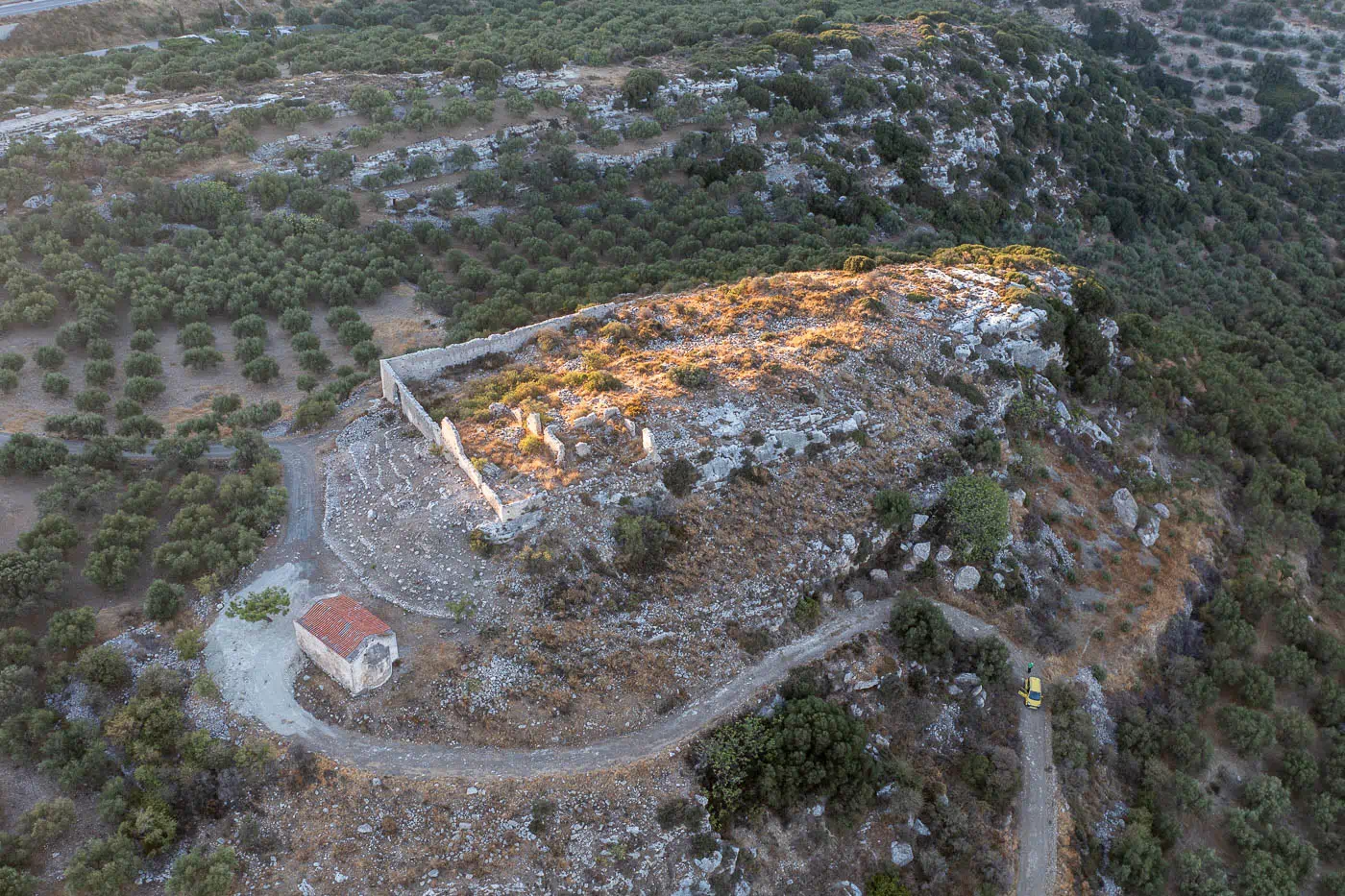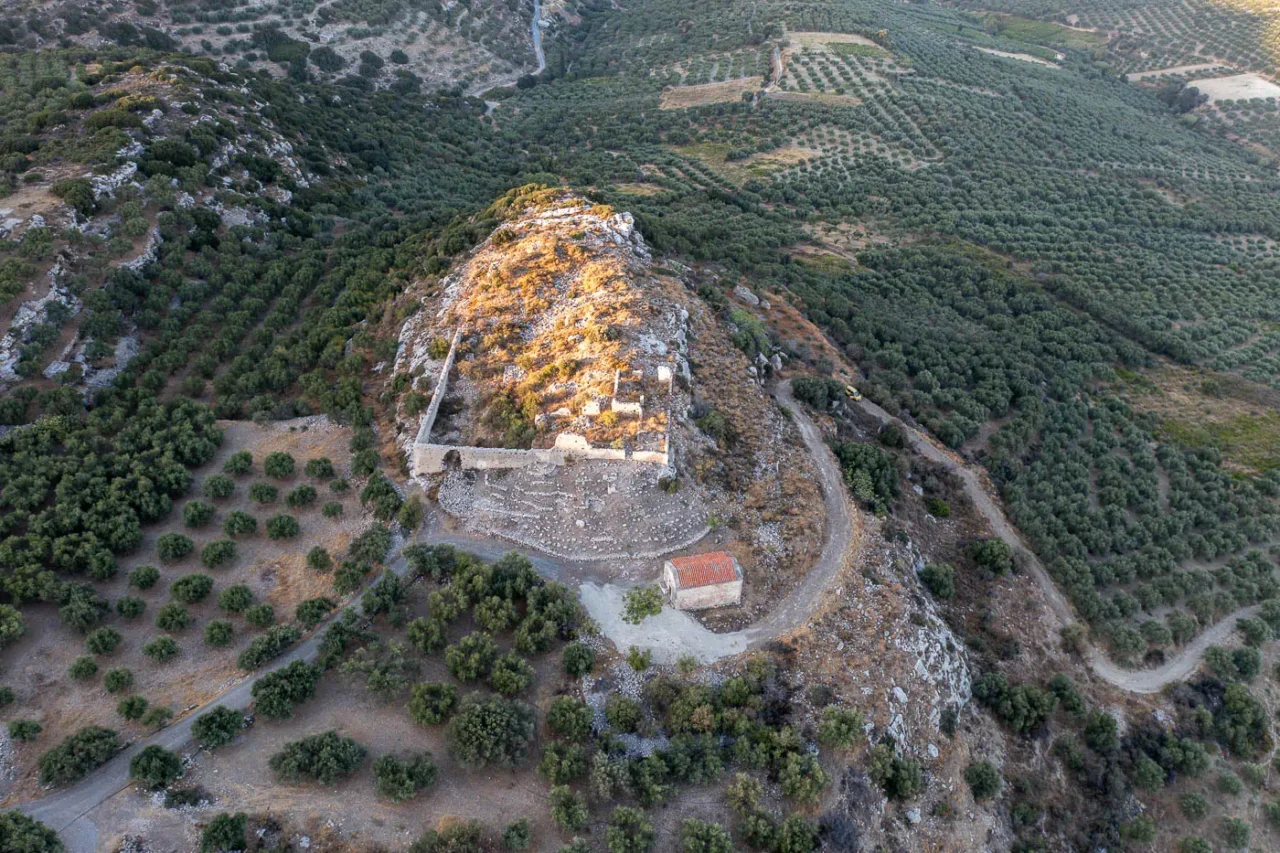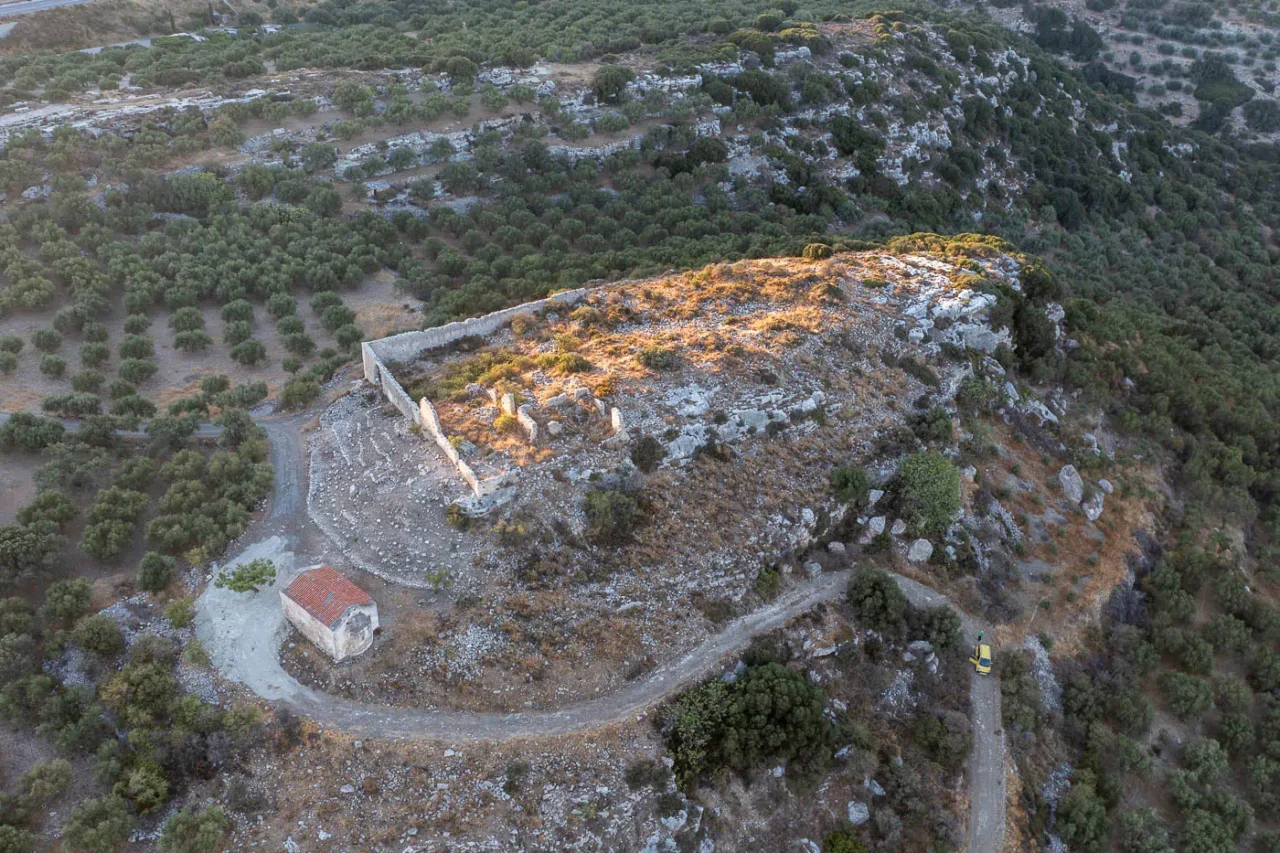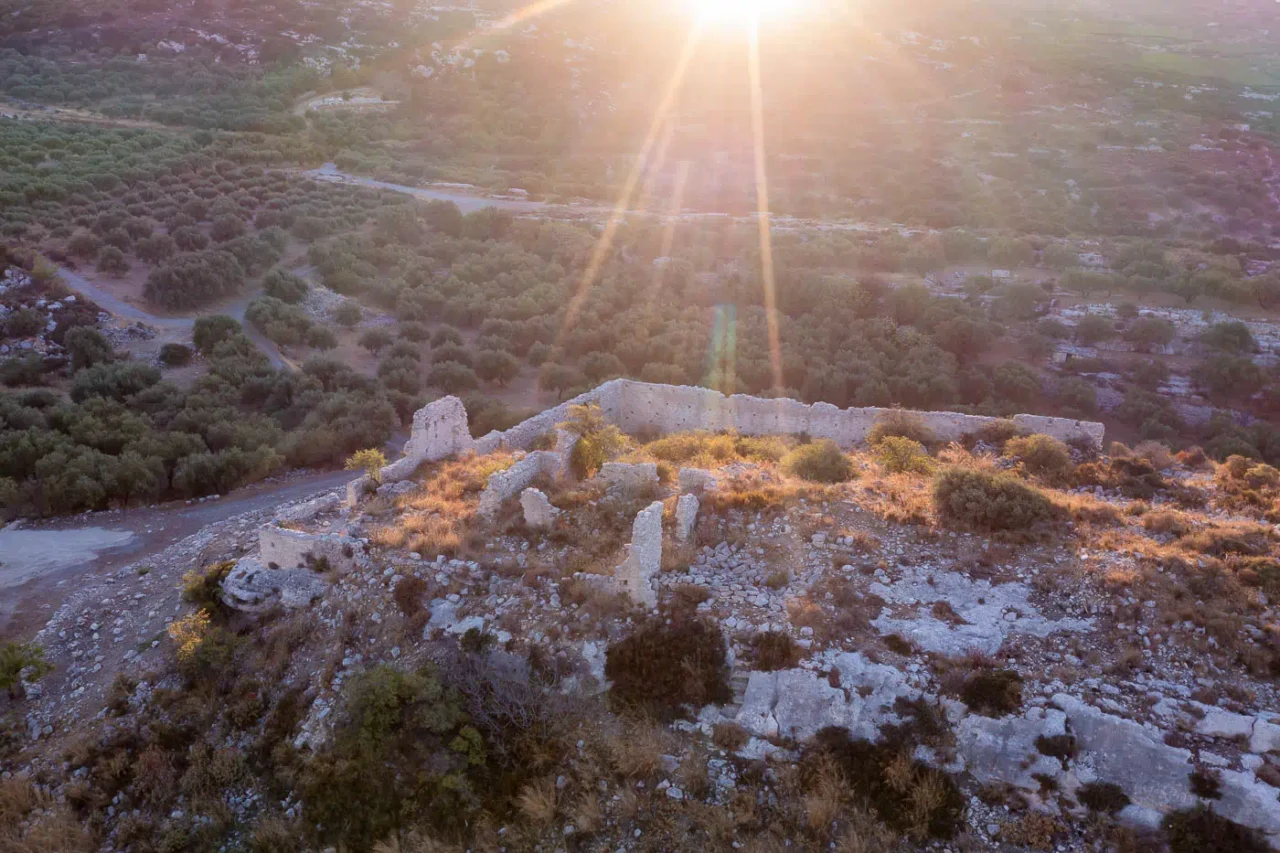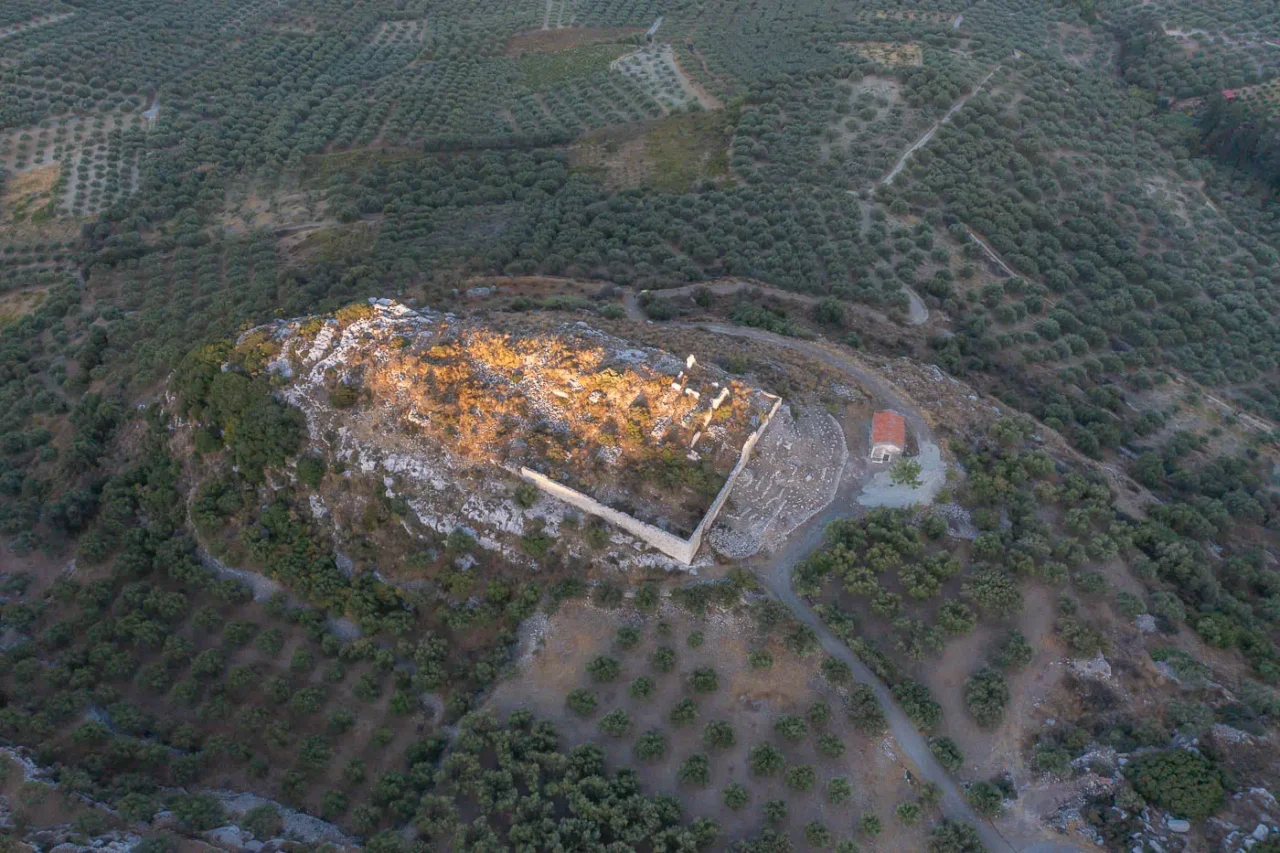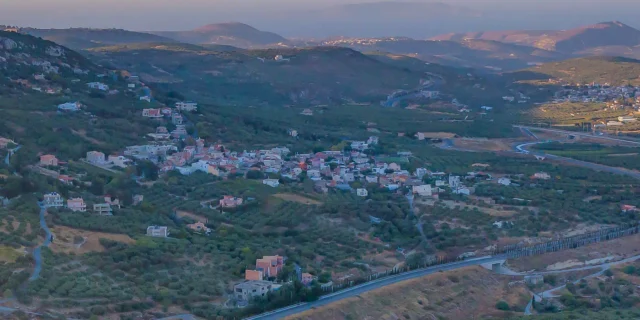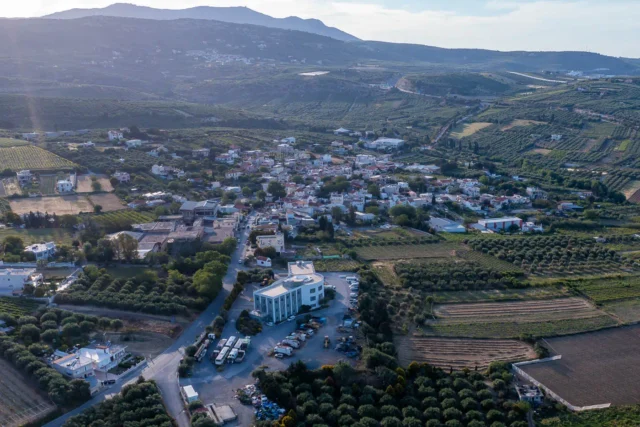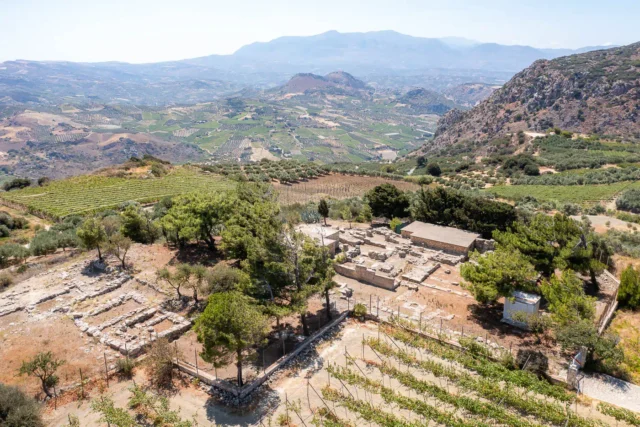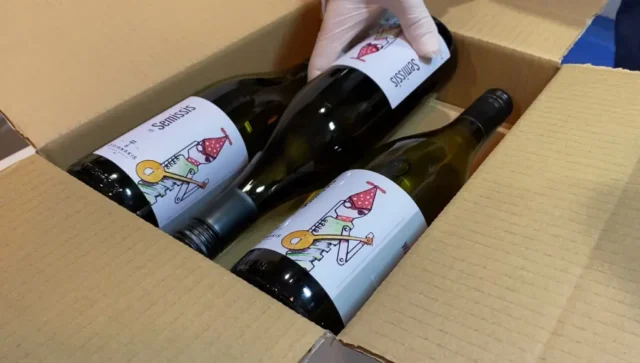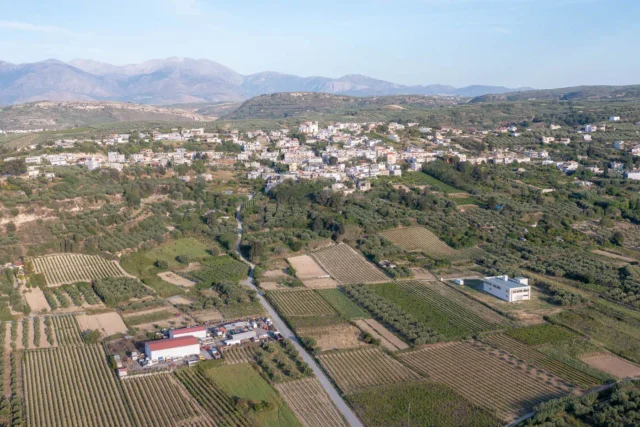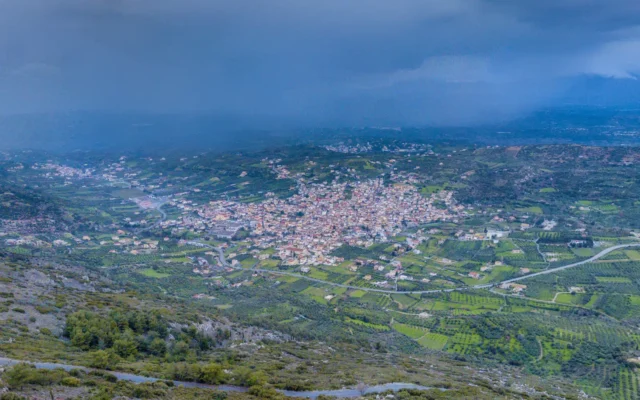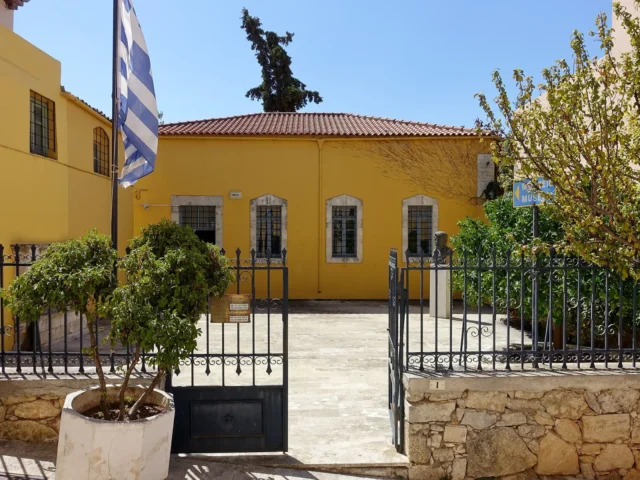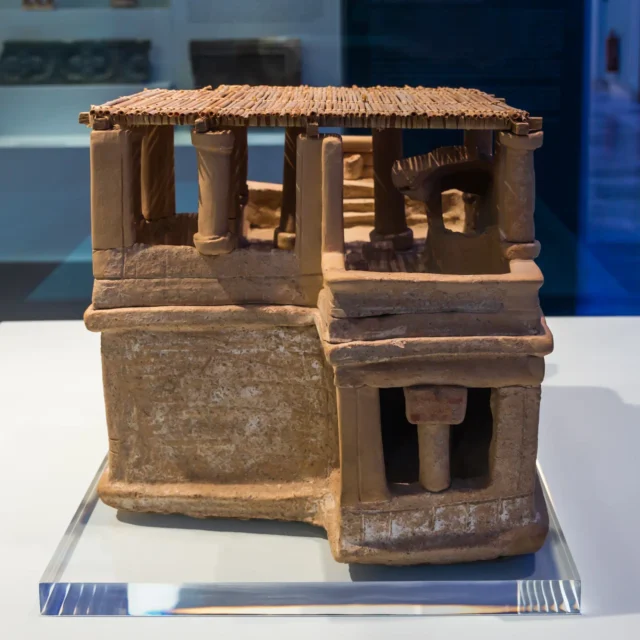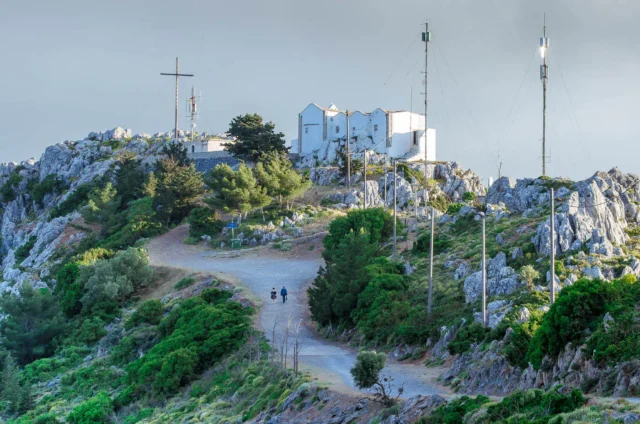The Castello del Corner, also known as the Fortress of Kornaron or the Paliochora Fortress, is located on the Kastellos hill south of Katalagari, in an area rich with olive groves and vineyards. According to tradition, it was built by Nikephoros Phokas after the liberation of Crete from the Arabs in 961 AD.
During the Venetian era, it served as the seat of a fiefdom and belonged to the Corner (Kornaros) family, overseeing their estates. The name Corner (Kornaros), an aristocratic Venetian family, echoes in the Cretan Renaissance through the poet Vitsentzos Kornaros. While no direct link exists between the poet and the fortress, the shared name hints at the interwoven history of Crete during this period.
The fortress is a rectangular structure with a perimeter wall approximately 5.5 meters high and 0.60 meters thick, enclosing the hilltop area. The total area of the site is estimated to be around 50 acres. The northern side, which ends in a cliff, does not have a perimeter wall. In 1997, stabilization and restoration work was carried out, and parts of the southern side of the perimeter wall were completed, restoring the overall appearance of the fort.
The masonry consists of rubble stonework with lime mortar as a binding material. Parts of the western side of the perimeter wall appear to be later additions and retain plaster both internally and externally. Inside the castle, there are numerous building stones scattered around, providing little information about the type of structures that once stood there. An exception is a square building near the southeast corner of the fort, where one wall adjoins the perimeter wall, forming an internal staircase that has collapsed at the top. This building, much taller than the height of the wall, resembles the castle of Melissa in terms of both form and location. Some square structures in the center of the castle were likely cisterns.
A few meters west of the fortress, there are many wine presses carved into the rock, believed to have been used since the Minoan era. During the Venetian era, as in the rest of Crete, large quantities of Malvasia wine, one of the most famous wines in Europe at the time, were produced here.
Right next to the perimeter wall is the small church of Zoodochos Pigi, with no surviving frescoes. A similar fortress with wine presses and a church dedicated to Zoodochos Pigi is the fortress of Melissa near Agios Thomas.
Construction Period:
- According to tradition, built in 961 AD by Nikephoros Phokas.
Location:
- Kastellos hill south of Katalagari, Crete.
Dimensions:
- Roughly rectangular structure.
- Perimeter wall approximately 5.5 meters high and 0.60 meters thick.
- Total area of the site is estimated to be around 50 acres.
Historical Significance:
- Served as the seat of a fiefdom during the Venetian era.
- Owned by the Corner family.
- Associated with the production of Malvasia wine during the Venetian era.
Current Status:
- Mostly in ruins, with only parts of the perimeter wall and foundations of buildings remaining.
- The church of Zoodochos Pigi still stands but with no surviving frescoes.








